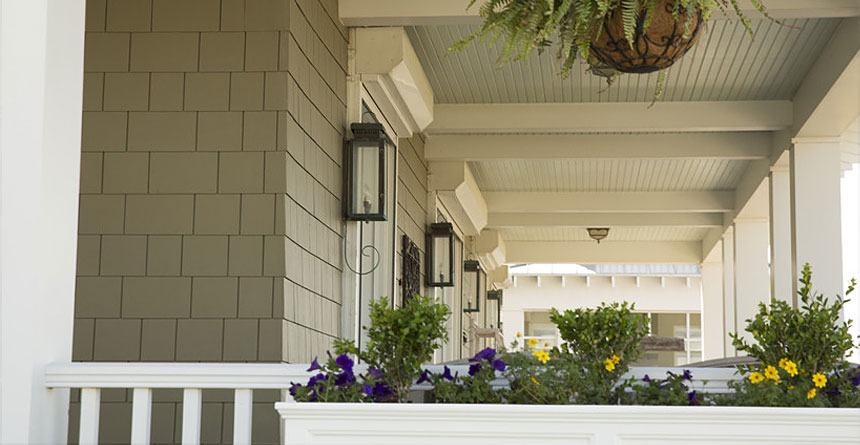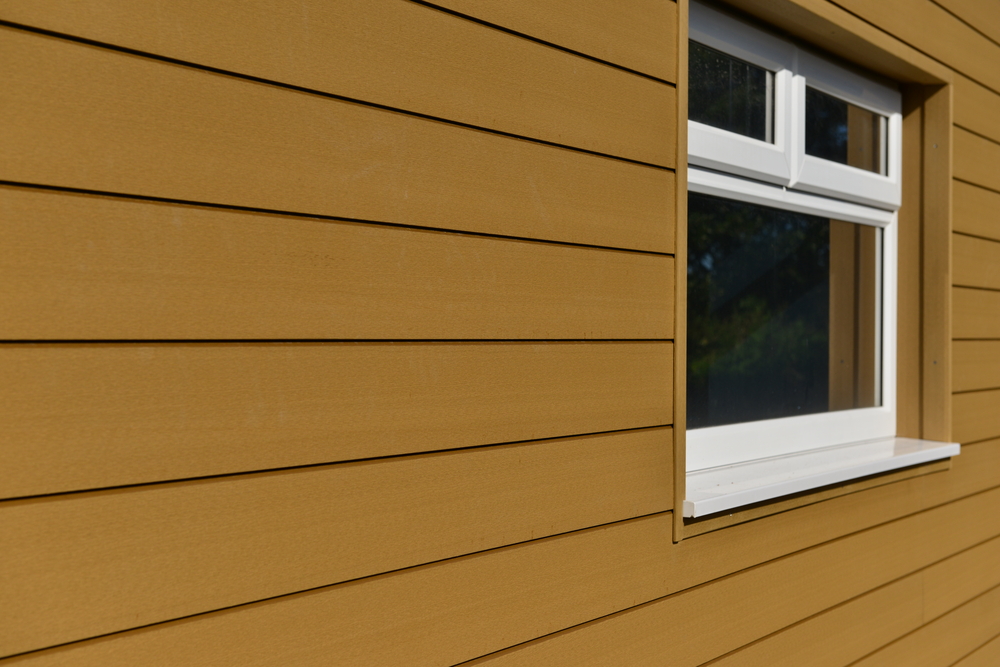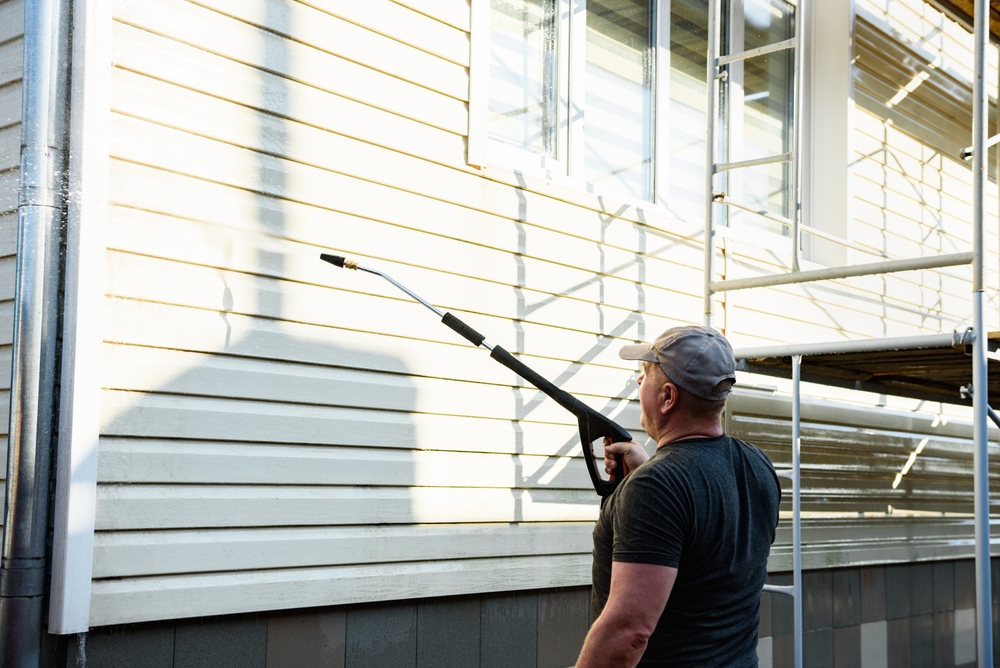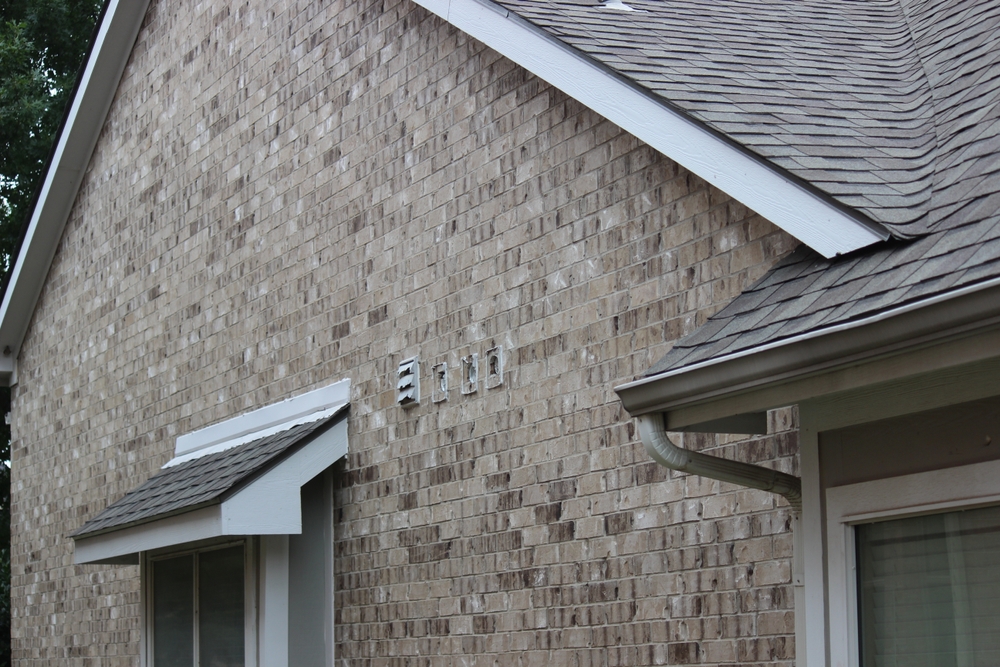Hardie® Shingle Siding represents not just a choice in home exterior but a commitment to quality and durability. This article aims to explore every facet of Hardie® Shingle Siding, from its history to its installation, offering insights into why it stands as a leading choice for homeowners seeking both aesthetic appeal and longevity in their home exteriors.
History and Evolution of Hardie® Siding Materials
The history and evolution of Hardie® siding materials is a fascinating journey that reflects the constant pursuit of excellence in the construction and building materials industry. Hardie® Shingle Siding, in particular, has a remarkable story that highlights its commitment to quality and durability.
Hardie® Shingle Siding’s roots can be traced back to James Hardie, who founded the company in 1888 in Melbourne, Australia. Initially, the company focused on manufacturing and providing quality building materials for the construction industry. However, it wasn’t until the early 1900s that the company began experimenting with fiber-cement technology, laying the foundation for the development of their iconic siding materials.
Over the decades, Hardie® continued to refine and improve their siding products, incorporating innovative technologies and materials into their manufacturing processes. One of the key milestones in their evolution came in the 1980s when they introduced the HardieZone® system. This system recognized that different regions of the United States had varying climate conditions, and as a result, Hardie® developed specific formulations of their siding materials to ensure optimal performance in different climates.
Hardie® Shingle Siding, with its distinctive appearance that replicates the timeless charm of cedar shingles, quickly gained popularity among homeowners, architects, and builders. Its ability to withstand harsh weather conditions, resist pests, and require minimal maintenance made it an attractive choice for residential and commercial projects alike.
In recent years, Hardie® has continued to innovate and expand its product line, introducing variations of shingle siding to cater to evolving architectural styles and design preferences. These innovations include different textures, colors, and profiles that allow homeowners and builders to customize the look of their properties while still enjoying the exceptional durability and longevity that Hardie® siding materials are known for.
The history and evolution of Hardie® Shingle Siding exemplify the company’s dedication to providing customers with high-quality, aesthetically pleasing, and long-lasting siding solutions. As the construction industry advances and sustainability becomes increasingly important, it’s likely that Hardie® will continue to adapt and incorporate eco-friendly technologies into their products, further enhancing their reputation as a leader in the field of siding materials. So, whether you’re looking to add a touch of classic elegance to your home or seeking a siding solution that can withstand the test of time, Hardie® Shingle Siding remains a top choice backed by a rich history of innovation and quality.
The Unique Appeal of Shingle Siding
Shingle siding, a timeless architectural element, has evolved over the years. What sets it apart is its classic look that can complement various home styles, from traditional to contemporary. Hardie® Shingle Siding, in particular, elevates this appeal with its unmatched blend of aesthetics and durability. It captures the natural look of cedar shingles but without the maintenance hassle and deterioration issues. This siding offers a crisp, clean look with the added benefit of being resistant to rotting, cracking, and splitting – common issues in traditional wood siding.
Why Choose Hardie® Shingle Siding?
Choosing Hardie® Shingle Siding means opting for a product that seamlessly combines durability with beauty. One of the biggest advantages of this siding is its resistance to various forms of damage, including moisture, pests, and fire. Additionally, Hardie® Siding is engineered for climate, meaning it’s designed to withstand the specific weather challenges of your geographic location. Its ColorPlus® Technology also ensures vibrant, long-lasting color, reducing the need for frequent repainting. This makes it an ideal choice for homeowners looking for a high-quality, low-maintenance exterior solution.
Installation Process of Hardie® Siding
The installation of Hardie® Shingle Siding is a meticulous process that requires precision and expertise. It typically involves measuring and cutting the siding panels to fit the specific dimensions of your home, ensuring a seamless appearance. Proper installation is crucial to maximize the performance and lifespan of the siding. It involves securing the siding to the house using specialized nails and ensuring that all joints and seams are properly sealed. While some homeowners might consider DIY installation, professional installation is recommended to ensure that the siding is installed according to Hardie®’s specifications.
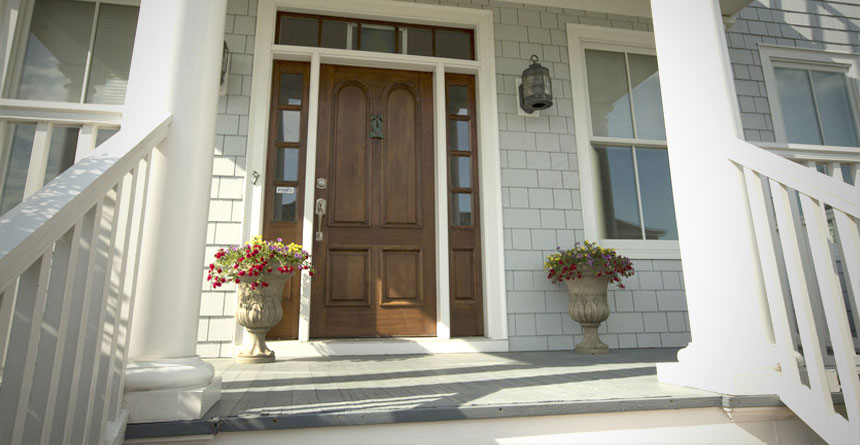
Color and Design Options in Hardie® Shingle Siding
One of the most exciting aspects of Hardie® Shingle Siding is the variety of color and design options available. With Hardie®’s ColorPlus® Technology, homeowners can choose from a wide range of colors that are baked onto the siding for maximum durability and fade resistance. Whether you prefer a classic, neutral palette or bold, contemporary hues, there’s an option to suit every taste. Additionally, Hardie® Shingle Siding comes in various styles, including straight-edge and staggered-edge panels, allowing for a customized look that reflects your personal style and complements your home’s architecture.
The Durability Factor: Weather and Fire Resistance
Indeed, Hardie® Shingle Siding stands out as a superior siding choice due to its exceptional durability and resistance to various environmental challenges. Here, let’s delve further into its remarkable qualities that make it an outstanding option for homeowners seeking longevity and peace of mind in their siding investment.
- Weather Resistance: Hardie® Shingle Siding is engineered to withstand the most extreme weather conditions. It can endure heavy rain without swelling or deteriorating, and it remains intact even in high winds, preventing damage that can be caused to other siding materials. Additionally, its robust composition provides protection against hail, ensuring your home’s exterior remains unscathed during severe storms.
- Fire Resistance: One of the standout features of Hardie® Shingle Siding is its non-combustible nature. Unlike traditional wood siding that can be highly flammable, Hardie® siding offers increased fire resistance. This can be a critical advantage in regions prone to wildfires, enhancing the safety and security of your home.
- Warp and Rot Resistance: Wood siding can be vulnerable to warping, rotting, and insect damage over time. Hardie® Shingle Siding, on the other hand, is composed of fiber cement, which is impervious to these common issues. This resistance to warping and rotting ensures that your siding maintains its structural integrity and appearance for many years without the need for constant maintenance or replacement.
- Long-Term Investment: Due to its resilience and durability, Hardie® Shingle Siding represents a sound long-term investment for your home’s exterior. While the upfront cost may be slightly higher compared to some other siding materials, its longevity and minimal maintenance requirements make it a cost-effective choice over the life of your home.
- Curb Appeal: Beyond its durability, Hardie® Shingle Siding offers a timeless and classic appearance that enhances the curb appeal of your home. Its texture and design replicate the charm of cedar shingles, giving your home a distinctive and elegant look that can increase its overall value.
- Low Maintenance: Unlike wood siding, which requires periodic painting and sealing, Hardie® Shingle Siding is low maintenance. Its color is baked into the material during manufacturing, reducing the need for frequent repainting. This means less upkeep and more time to enjoy your home.
In summary, Hardie® Shingle Siding is a top-tier choice for homeowners who prioritize durability, weather resistance, fire safety, and long-term value. Its composition of fiber cement sets it apart from traditional siding materials, making it a wise investment that not only protects your home but also enhances its aesthetics. With Hardie® Shingle Siding, you can enjoy peace of mind knowing that your home’s exterior will remain beautiful and resilient for years to come.
Maintenance and Care for Your Shingle Siding
Maintaining Hardie® Shingle Siding is relatively straightforward, adding to its appeal. It requires minimal upkeep compared to traditional wood siding. Routine maintenance mainly involves washing the siding with a garden hose and mild detergent to keep it looking fresh and clean. It’s also recommended to periodically check for any cracks or chips in the paint and perform touch-ups as needed. This low-maintenance aspect is a significant benefit for homeowners who want the look of shingle siding without the constant upkeep.
Cost Analysis: Investment and Long-Term Savings
While the initial cost of Hardie® Shingle Siding might be higher than some other siding materials, it’s important to consider the long-term savings. Its durability means fewer repairs and replacements over time. Additionally, the long-lasting nature of the ColorPlus® finish reduces the need for repainting, saving money and effort in maintenance. When considering the lifespan of the siding and its ability to withstand harsh weather conditions without deteriorating, the investment in Hardie® Shingle Siding proves cost-effective in the long run.
Comparative Analysis: Hardie® Shingle Siding vs. Other Siding Materials
A comparative analysis of Hardie® Shingle Siding against other common siding materials, such as wood, vinyl, and aluminum, highlights the distinctive advantages that make Hardie® Siding a preferred choice for many homeowners and builders.
1. Durability and Resistance:
- Hardie® Shingle Siding: Hardie® Siding is renowned for its exceptional durability. It resists warping, rotting, and insect damage, common issues with wood siding. It is also non-combustible, providing superior fire resistance compared to wood.
- Wood Siding: Wood siding offers a classic look but is susceptible to rot, warp, and insect infestations over time. It requires regular maintenance, including painting or staining.
- Vinyl Siding: Vinyl siding is low maintenance and resists rot and insect damage. However, it may not withstand extreme weather conditions as well as Hardie® Siding.
- Aluminum Siding: Aluminum siding is durable but can dent easily, and its color may fade over time, requiring repainting or refinishing.
2. Aesthetic Appeal:
- Hardie® Shingle Siding: Hardie® Siding closely replicates the natural look of wood shingles, offering a classic and timeless aesthetic appeal. It provides the warmth and charm of wood without the drawbacks.
- Wood Siding: Wood siding is prized for its natural beauty but requires ongoing maintenance to preserve its appearance.
- Vinyl Siding: Vinyl siding comes in a variety of colors and styles but may not capture the authentic look of wood as convincingly as Hardie® Siding.
- Aluminum Siding: Aluminum siding offers a sleek and modern appearance but may lack the warmth and texture of wood or Hardie® Siding.
3. Maintenance Requirements:
- Hardie® Shingle Siding: Hardie® Siding is low maintenance, requiring minimal upkeep compared to wood siding. Its color is baked into the material, reducing the need for frequent repainting.
- Wood Siding: Wood siding demands regular maintenance, including painting, staining, and sealing to protect against weathering and decay.
- Vinyl Siding: Vinyl siding is low maintenance but can be prone to fading and may require cleaning to maintain its appearance.
- Aluminum Siding: Aluminum siding is relatively low maintenance but may need repainting or refinishing if the color fades or the surface gets damaged.
4. Environmental Impact:
- Hardie® Shingle Siding: Hardie® Siding is made from sustainable materials, and its long lifespan reduces the need for replacement, contributing to environmental sustainability.
- Wood Siding: Wood siding can be sustainable if sourced from certified forests, but its maintenance requirements can increase its environmental impact.
- Vinyl Siding: Vinyl siding production raises environmental concerns due to the use of PVC and its non-biodegradable nature.
- Aluminum Siding: Aluminum siding can be recycled, but its production has energy-intensive processes.
Environmental Impact and Sustainability Efforts
Hardie® Shingle Siding is an environmentally conscious choice. The materials used in its production are sustainable, and the manufacturing process is designed to minimize waste and energy consumption. Furthermore, the durability of Hardie® Siding means less frequent replacements, reducing the environmental impact over the lifespan of the siding.
Customer Testimonials: Real-Life Experiences
Real-life experiences from customers highlight the satisfaction with Hardie® Shingle Siding. Homeowners often praise the transformation in their home’s appearance and the ease of maintenance. Many also express appreciation for the peace of mind that comes with the siding’s durability and weather resistance.
Professional Installation vs. DIY: What to Know
While DIY installation of siding might seem cost-effective, professional installation is highly recommended for Hardie® Shingle Siding. Professionals ensure correct installation, which is crucial for the siding’s performance and warranty. They have the tools and expertise to handle the unique properties of fiber cement siding, ensuring a flawless finish.

Warranty and Support from Hardie®
Hardie® offers a robust warranty for its shingle siding, which is a testament to its confidence in the product’s durability and quality. The warranty covers defects in materials and workmanship, giving homeowners added assurance in their investment. It’s important to ensure that installation is carried out by a certified professional to maintain the validity of the warranty.
Common Myths and Misconceptions Debunked
There are several myths about Hardie® Shingle Siding that need clarification. For instance, some believe it’s as fragile as traditional cement, which is not true; it’s engineered for high durability. Another misconception is that color options are limited, whereas Hardie® actually offers a wide range of colors and finishes.
Design Inspirations: Transforming Home Exteriors
Hardie® Shingle Siding offers a plethora of design possibilities. Whether you’re aiming for a traditional look or a modern facade, there are numerous ways to use this siding to enhance your home’s curb appeal. Inspirational designs can be found in various architectural styles, showcasing the versatility of Hardie® Siding in achieving different aesthetic goals.
Navigating the Product Range: HardiePlank®, HardiePanel®, and More
Hardie® offers a range of siding products, including HardiePlank® lap siding and HardiePanel® vertical siding. Each product has unique features and benefits, catering to different architectural styles and personal preferences. Understanding the range helps in selecting the right product for your specific needs.
Technical Specifications: Understanding the Basics
Understanding the technical specifications of Hardie® Shingle Siding is important for homeowners. This includes knowledge about the dimensions, composition, installation requirements, and warranty details. Being informed helps in making a well-rounded decision for your home siding needs.
Preparation and Pre-Installation Tips
Proper preparation is key to a successful installation of Hardie® Shingle Siding. This includes ensuring that the walls are properly sheathed and weatherproofed. Pre-installation planning also involves choosing the right tools and materials for cutting and installing the fiber cement siding.
Troubleshooting Common Issues
While Hardie® Shingle Siding is known for its durability, occasional issues may arise. Common concerns include minor cracking or chipping, which can be easily rectified with touch-up kits. Understanding how to address these minor issues can help maintain the siding’s appearance and integrity.
The Future of Siding: Innovations and Trends
The siding industry is continually evolving, with new innovations and trends emerging. Hardie® is at the forefront of these developments, constantly improving its products to meet the changing needs and preferences of homeowners. Staying updated with these trends ensures that your home remains modern and efficient.
Region-Specific Recommendations and Adaptations
Different regions have varying climatic conditions, and Hardie® Shingle Siding is designed to cater to these specific needs. Whether it’s resistance to humid conditions, protection against salty sea air, or durability in cold, snowy climates, Hardie® has solutions tailored to diverse environmental conditions.
Accessorizing Your Siding: Trim, Shutters, and More
Complementing your Hardie® Shingle Siding with the right accessories can significantly enhance your home’s aesthetic appeal. This includes selecting the right trim, shutters, and other exterior elements that align with the siding’s style and color.
The Importance of Professional Advice and Consultation
Seeking professional advice and consultation is crucial when choosing and installing Hardie® Shingle Siding. Experts can provide valuable insights into the best practices for installation, maintenance, and design options, ensuring that you make the most of your siding choice.
FAQs
What makes Hardie® Shingle Siding different from other siding materials? Hardie® Shingle Siding stands out from other siding materials primarily due to its composition of fiber cement, a robust blend of cement, sand, and cellulose fibers. This unique composition gives it superior durability, resistance to weathering, and low maintenance needs compared to traditional wood, vinyl, or aluminum sidings. It’s also non-combustible, making it safer in terms of fire resistance. Moreover, Hardie® Shingle Siding offers the aesthetic appeal of natural wood but without the common issues like rotting, warping, or pest infestation.
Can Hardie® Shingle Siding withstand extreme weather conditions?
Yes, Hardie® Shingle Siding is specifically designed to withstand extreme weather conditions. It’s highly resistant to damage from rain, wind, hail, and prolonged exposure to sunlight. The material’s strength and durability make it less likely to crack, chip, or swell, even under harsh weather conditions. Additionally, Hardie® Shingle Siding is engineered for climate, meaning it is tailored to perform optimally in the specific weather challenges of different regions.
How do I maintain my Hardie® Shingle Siding to ensure its longevity? Maintaining Hardie® Shingle Siding is relatively straightforward. Regular cleaning with a garden hose and a mild detergent can keep it looking new. It’s important to inspect the siding periodically for any signs of damage or wear and address them promptly. Touching up paint in areas where it may have chipped off and ensuring that caulked areas are intact are also part of routine maintenance. This minimal upkeep ensures the siding’s longevity and preserves its aesthetic appeal.
Are there a variety of color options available in Hardie® Shingle Siding? Absolutely! Hardie® Shingle Siding offers a wide range of color options through its ColorPlus® Technology. This collection includes a variety of hues, from classic neutrals to more bold and contemporary shades. The ColorPlus® Technology also ensures that these colors are vibrant and resistant to fading, chipping, or cracking over time, maintaining the siding’s fresh and appealing look for years.
Is Hardie® Shingle Siding an environmentally friendly choice?
Yes, Hardie® Shingle Siding is considered an environmentally friendly choice for several reasons. The materials used in its production are sustainable, and the manufacturing process is designed to be energy efficient and generate minimal waste. Additionally, the durability and longevity of Hardie® Siding mean less frequent replacements, reducing the environmental impact associated with manufacturing and disposing of siding materials.
What kind of warranty does Hardie® offer for its shingle siding?
Hardie® offers a strong warranty for its shingle siding, reflecting confidence in its product’s quality and durability. Typically, this includes a 30-year non-prorated, transferable, limited warranty. This warranty covers defects in materials and workmanship, offering homeowners peace of mind in their investment. It’s important for homeowners to ensure that their siding is installed by a certified professional to maintain the warranty’s validity.
Conclusion
In conclusion, Hardie® Shingle Siding is an exemplary choice for homeowners who prioritize durability, aesthetic appeal, and value for money. With its vast range of benefits and options, it stands as a testament to Hardie®’s commitment to excellence in home building materials.

